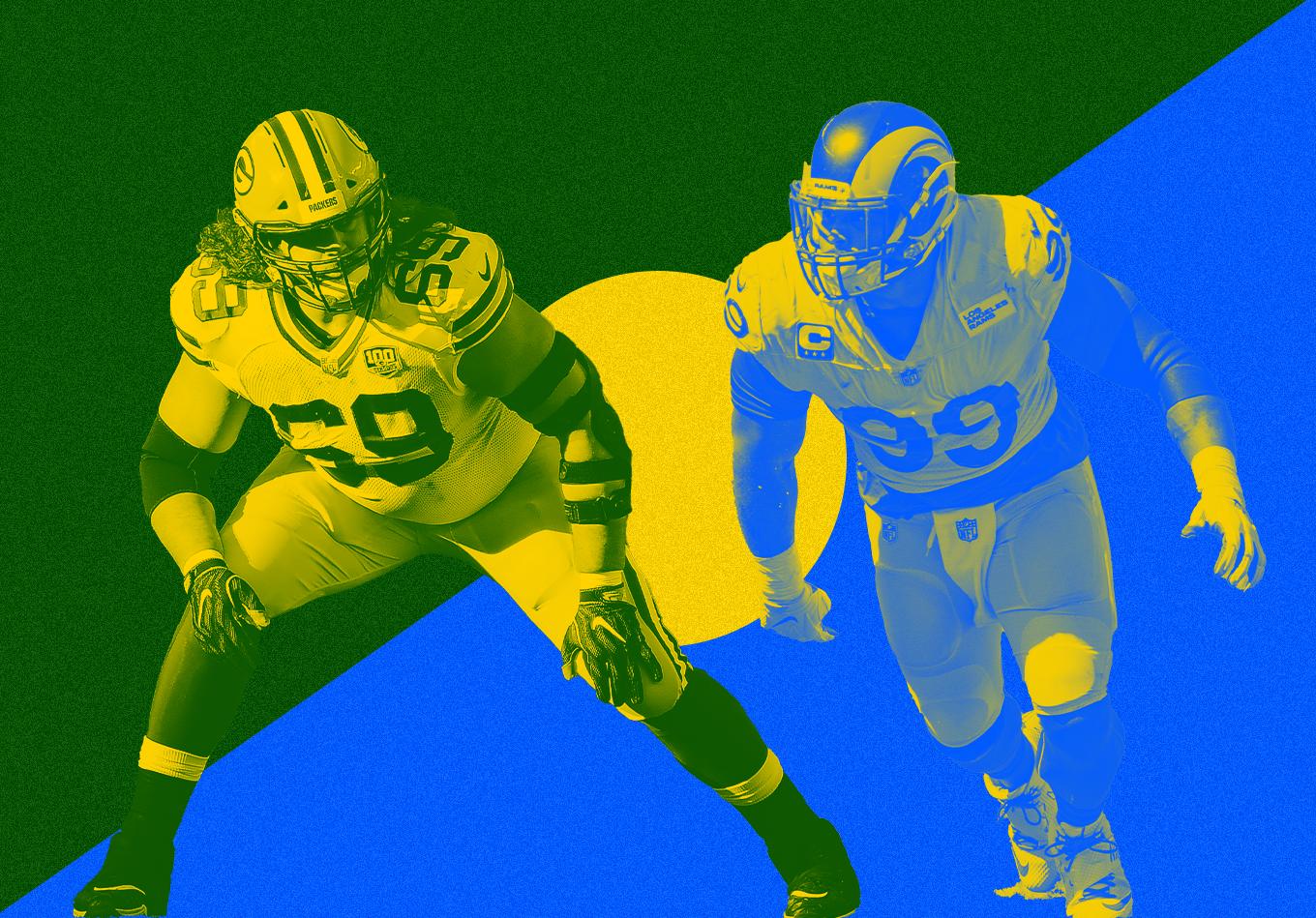We’re taking a look at what pressure metrics tell us about the brilliance of Aaron Donald and T.J. Watt, and why the value of having an elite pass protector at center is lower than expected. Check out our NFL advanced leaderboard here.
The 3-yards-and-a-cloud-of-dust era is a distant memory.
As a result, the ability to protect the quarterback while also putting pressure on the opponent’s passer is as important as it has ever been. Instead of grading players based on opinion, four metrics have been developed to measure these critical areas with a more data-driven approach.
In the simplest of terms, pressure rate (PR%) is how often a defender is able to get into the backfield and have an unabated path to the quarterback. It is important to note that plays in which a defender has no real chance to reach the QB (e.g. screens, RPOs, extremely quick passes) aren’t included as pass-rush opportunities. Removing these false chances gives a better idea of which players are truly the best in pressuring and protecting the quarterback.
On the flip side, pressure-allowed rate (PR-A%) calculates an offensive lineman’s tendency to be beaten and allow a defender to get into the backfield and have an unabated path to the quarterback. Finally, adjusted sack rate (ASR) goes one step further than pressure rate and evaluates how often defenders actually get to the QB. And adjusted sack-allowed percentage (AS-A%) measures a lineman’s tendency to allow rushers to reach the passer.
As you may expect, these rates vary based on position. Because more pressures occur off the edge than up the middle, edge rushers and offensive tackles (OT) have a higher PR% and PR-A% than defensive tackles (DT) and offensive guards (OG), respectively, and positional data is dissected on a play-by-play basis in order to examine each player’s rate depending on where he lines up. This provides more context for defenders who line up either inside or out depending on the situation.
As an example, we’ll be using 2020 positional data to examine player rates in these metrics on both sides of the ball. We’ll also show the league average rate as a way to understand how these numbers translate over the entire NFL.
With a 15.9 average PR%, edge rushers are by far and away the top pressure generators. Pittsburgh Steelers defensive end T.J. Watt spent most of his time on the edge, where he had an excellent 25.8 PR%.
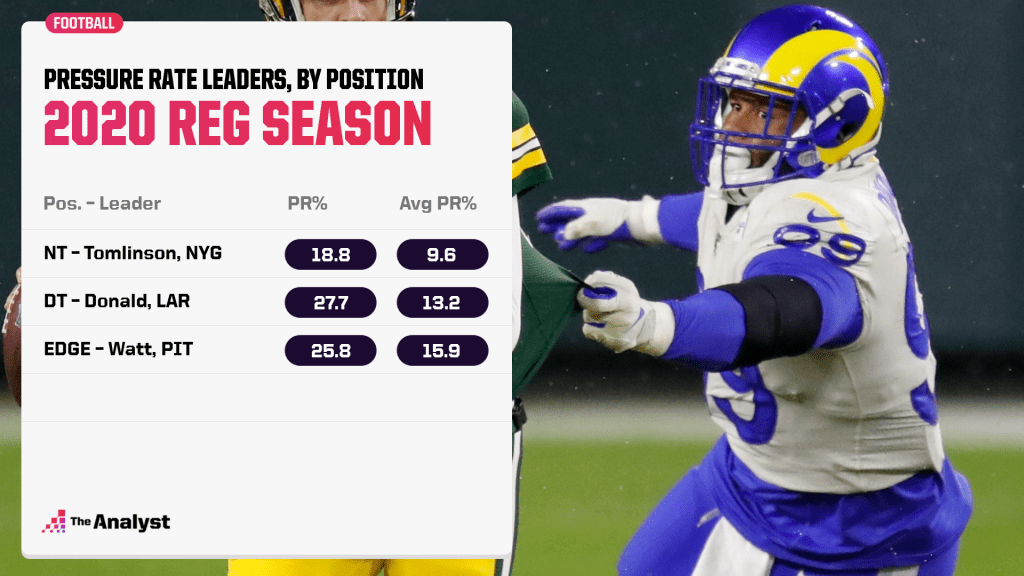
At defensive tackle, it’s easy to see why Los Angeles Rams superstar Aaron Donald is considered the best defensive lineman in the league. He won his third AP Defensive Player of the Year Award in 2020 and his 46.5 sacks since 2018 are the most in the NFL, four more than T.J. Watt’s 42.5.
While in the middle, the numbers back up conventional wisdom that nose tackles are generally more impactful defending the run, as they only record pressures around two-thirds as often as edge rushers.
Just as indicated above when comparing edge rushers and defensive tackles, guards give up fewer pressures than tackles. So it’s easy to see why it was a big blow to the Green Bay Packers when David Bakhtiari went down with a torn ACL late in 2020.
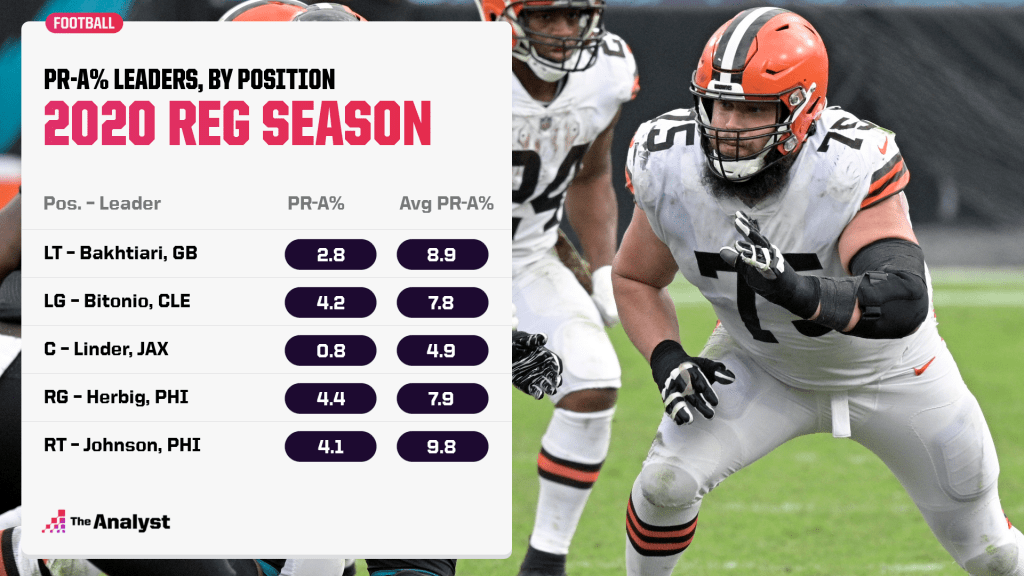
The Philadelphia Eagles seemed to have at least Jalen Hurts’ right side protected after Nate Herbig and Lane Johnson led their respective positions in PR-A% in 2020.
Though ASR evaluates how often defenders actually get to the quarterback, the one adjustment made in this metric is that it credits ALL players that record a pressure on a sack, even if they weren’t the one to bring down the quarterback. This prevents a player from getting punished for tearing into the backfield early and flushing a QB before a teammate finishes the job.
Even with this adjustment, ASR is far less predictive than PR%. Ultimately, there is too much randomness in bringing the passer down before the ball comes out. So over the long term, PR% is a much more important number to look at as an individual rate. That aside, Donald’s dominance shows again as he ranks No. 1 among all defensive tackles in ASR.
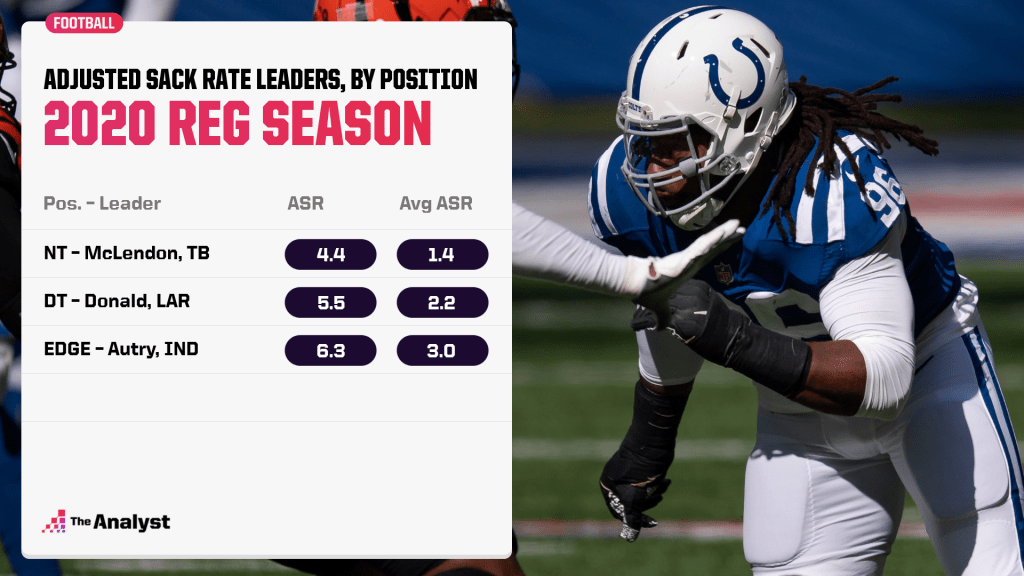
The Tennessee Titans appeared to make a big move by signing Denico Autry to a three-year, $21.5 million deal to bolster the team up front ahead of the 2021 season. Autry had 7.5 sacks in 2020, while the Titans finished with the third-fewest sacks in the league in 2020.
Now let’s take a look at which blockers had very few (or in some cases, none) of the pressures they allowed actually reach the quarterback.
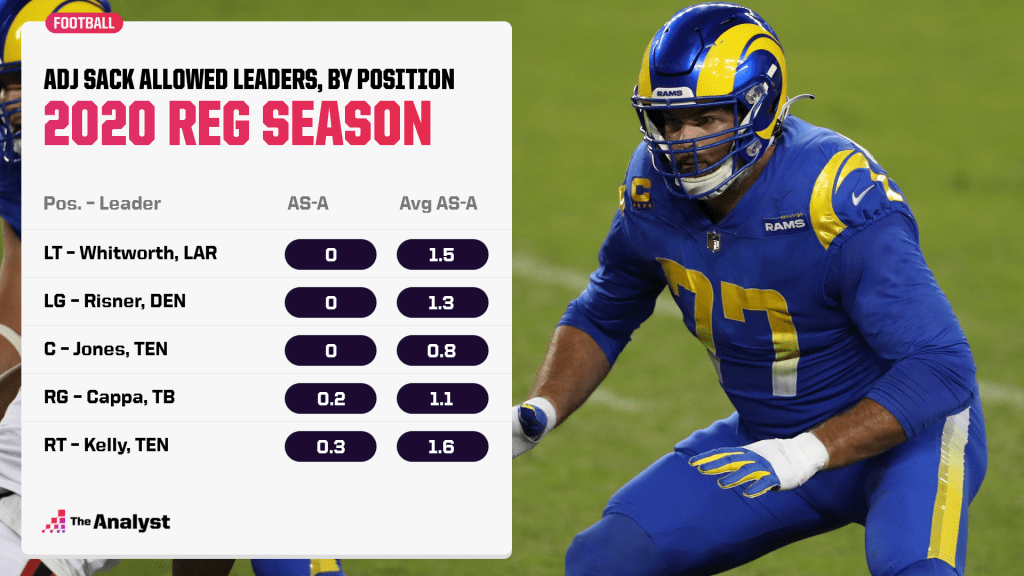
AS-A% is primarily used to get an idea of which players’ sack allowed rates aren’t matching their pressure allowed rates, and are due to either improve or regress based on how often they’re getting to the quarterback.
Andrew Whitworth, Dalton Risner and Ben Jones didn’t allow their defenders to get to the quarterback in 2020, while Alex Cappa and Dennis Kelly were close to that level of performance.
